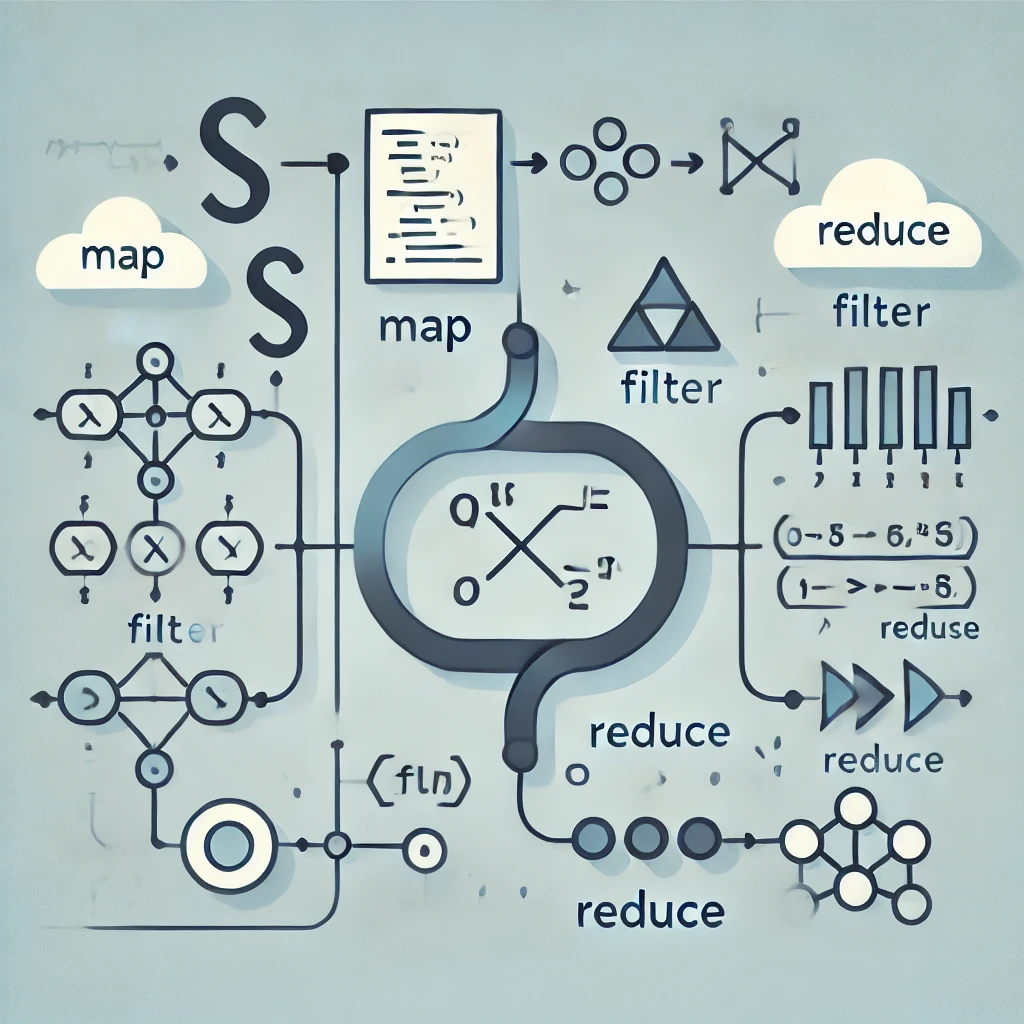Clean and Elegant Code with Map, Filter, and Reduce
Have you heard of map, filter, and reduce? If you’re familiar with them, you’re definitely writing more expressive code. If not, let’s discover why you should use them and where this flexibility comes from…

Most of us start programming in an imperative style: giving step-by-step instructions, telling the code what to do. You create loops, control variables, and write a ton of details to get to the final result. But did you know there’s a more elegant way to do this? With map, filter, and reduce, you can simplify the process. In this post, we’ll compare the traditional way with these functions, showing how they can make your code cleaner and more concise (examples in Python).
1. Example with map
Imagine you have a list of numbers and want to double the value of each one.
Imperative
In the imperative style, you’d have to create a new list, iterate over the numbers, and add each doubled value to the new list. Something like this:
| |
Here, you’re telling the program how to do it: “Create an empty list, loop through it, double the numbers, and insert them one by one.”
Functional with map
Now, using map, you express what you want: “Double each number in this list.”
| |
Notice that you don’t need to mention anything about the empty list or how to traverse the items. map takes care of that. This makes the code shorter and focused on the transformation, not the process. Less boilerplate, more results!
2. Example with filter
Now, imagine you want to get only the even numbers from that list.
Imperative
Here, you’d need to do another loop, checking each number, and if it’s even, add it to a new list:
| |
Once again, you’re telling the program how to proceed: “Check each number, see if it’s even, and put it in the list.”
Functional with filter
With filter, it’s straightforward: “Select the evens.”
| |
The magic here is that you focus only on the filtering condition, not on the control flow. This not only makes the code cleaner but also avoids common mistakes, like forgetting to add the item to the list or writing confusing logic in the loop.
3. Example with reduce
Let’s say you want to sum all the numbers in the list. In the imperative style, you’d have to declare an accumulator variable and iterate over the numbers, adding them one by one.
Imperative
Here’s the traditional approach:
| |
Once again, you’re telling how to do it. And here, you already need an extra variable, total, to keep track.
Functional with reduce
With reduce, you express directly: “Reduce this list to a single value by summing the items.”
| |
Look how neat: everything you need is in a single line. reduce takes the list and accumulates the value along the sequence, and you don’t have to worry about additional variables or loop control.
Why is using map, filter, and reduce elegant?
The main differentiator of functional functions compared to imperative style:
Expressiveness: Using these functions allows you to describe the intent of the code instead of detailing step by step how the operation should be done. The code becomes closer to the way we think about the problem, which improves readability.
Abstraction of control flow: You don’t have to worry about loops, indices, temporary variables, and all that junk that clutters the code with unnecessary details. This minimizes the chance of errors and improves maintenance.
Easy composition: The functional style allows you to compose operations intuitively. You can chain
map,filter, andreducewithout losing clarity:1 2nums = [1, 2, 3, 4] total = reduce(lambda acc, x: acc + x, filter(lambda x: x % 2 == 0, map(lambda x: x * 2, nums)))Here, you’re doubling the numbers, filtering the evens, and summing everything in a single expression. In imperative style, this would require multiple loops and variables, which would complicate the code.
Immutability and less state: These functions don’t modify the original data (unless you force it). This protects you from tricky debugging problems, like unexpected state changes, which are common in imperative style. In the functional world, data is sacred, and functions treat it without side effects.
Other Languages
It’s important to highlight that you don’t need to use a functional language like Elixir to take advantage of functions like map, filter, and reduce (we used Python in the examples). These functions are available in various programming languages. Let’s see how to implement the same examples in PHP and JavaScript.
1. map
PHP:
| |
JavaScript:
| |
2. filter
PHP:
| |
JavaScript:
| |
3. reduce
PHP:
| |
JavaScript:
| |
These examples show that, regardless of the language, the concept of higher-order functions (functions that take or return other functions) is widely applicable, allowing you to write more concise and expressive code.
Summary: from imperative to elegant
When you see imperative code, you’re focused on how the operation should be done, which leads to more code and more implementation details. With map, filter, and reduce, you specify what you want to do, letting the language handle the details. This results in leaner, more readable code that’s less prone to errors.
These functions are like the perfect soundtrack for data manipulation: discreet, efficient, and they get the job done with style!